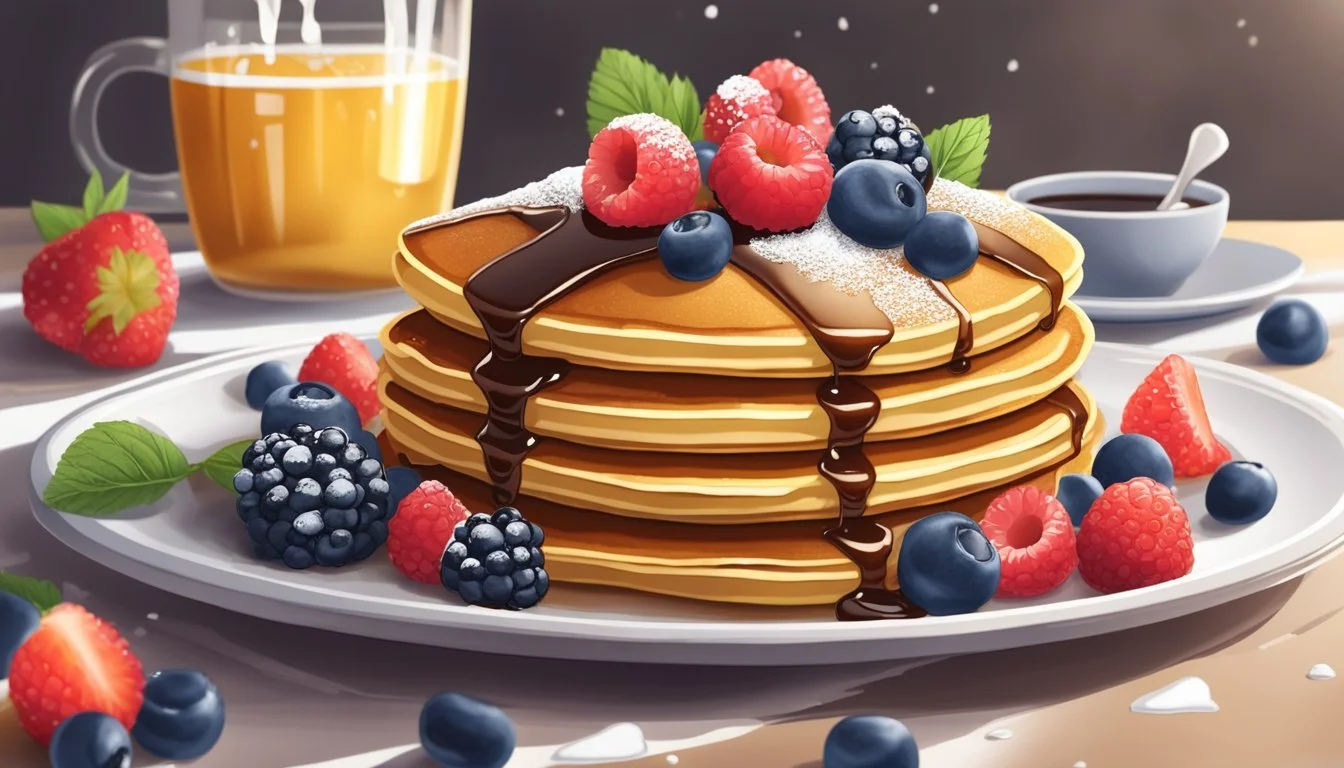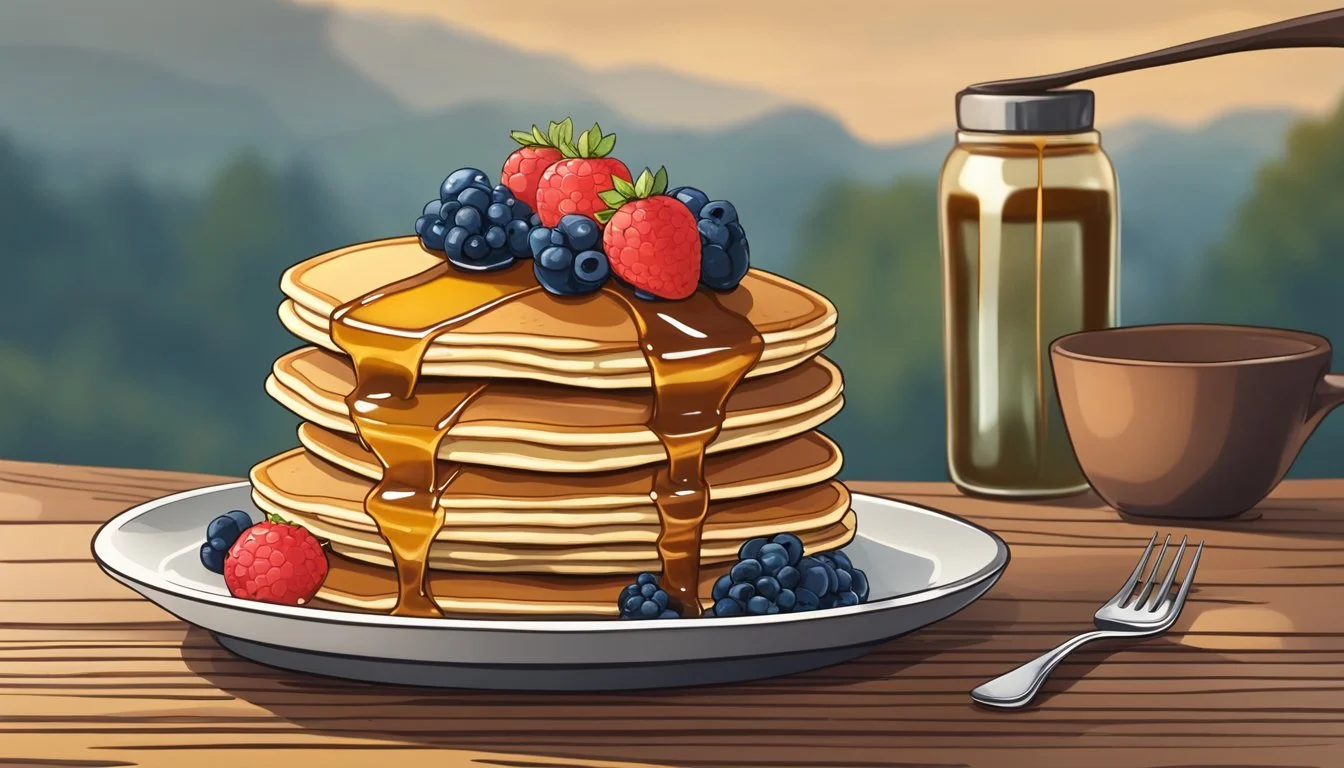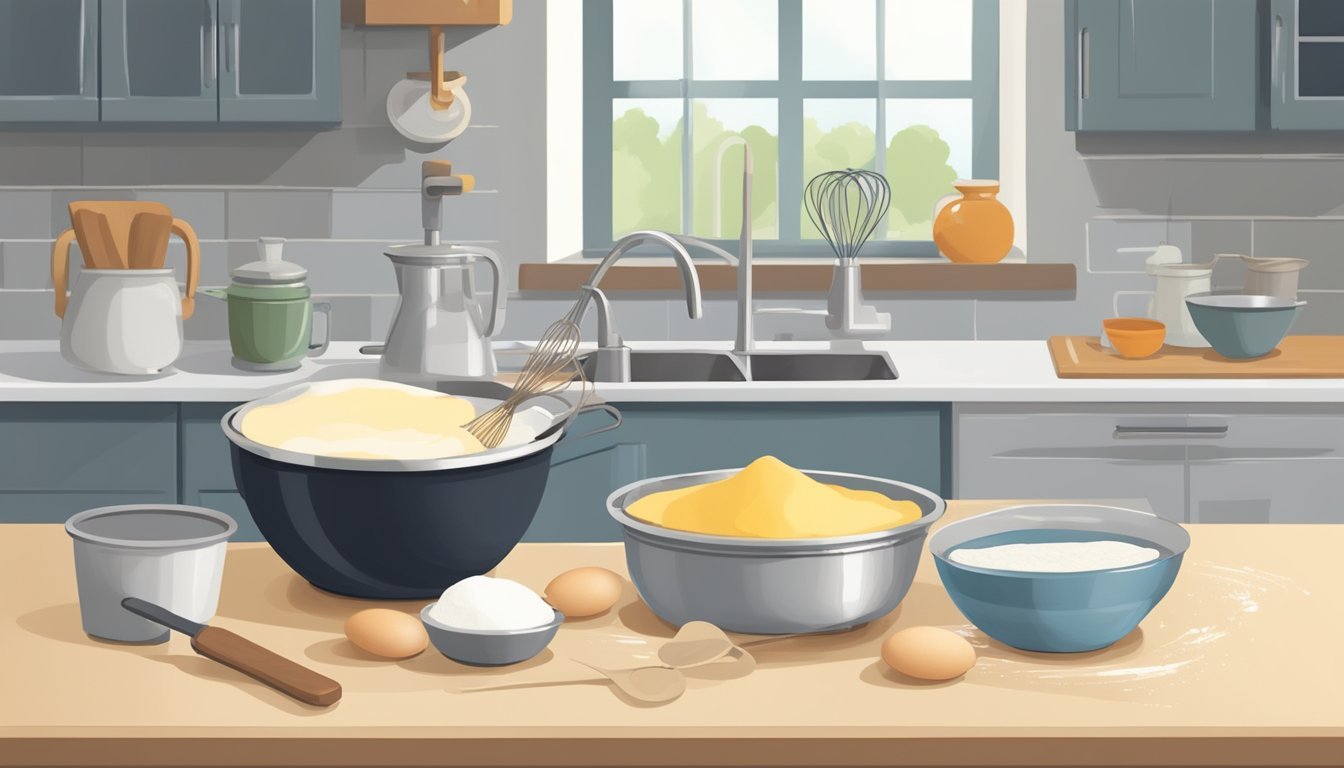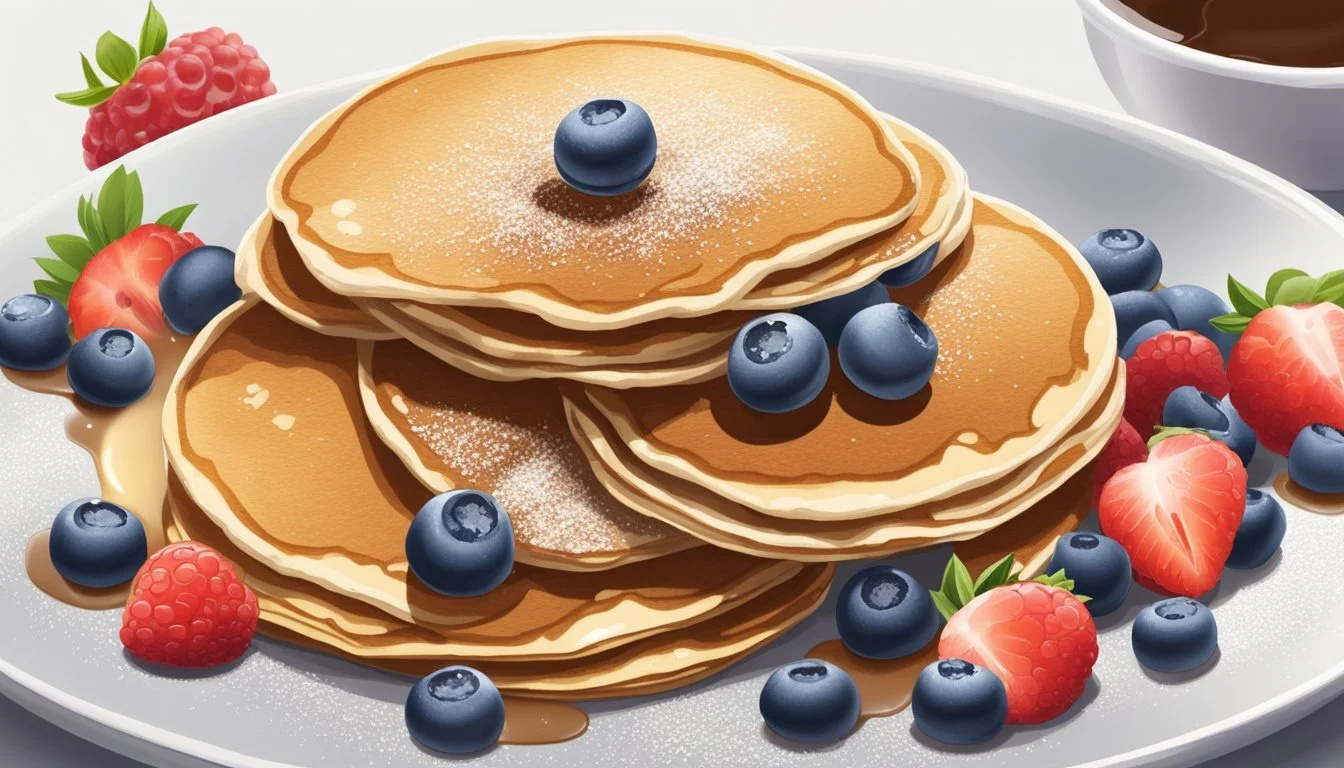How Long Do Gluten-Free Pancakes Last?
Storage Tips and Guidelines
Gluten-free pancakes are a delightful breakfast option for those with dietary restrictions or anyone looking for a tasty and fluffy morning treat. They offer the same satisfaction as traditional pancakes but are crafted with alternative flours to eliminate gluten. Whether you're using a store-bought mix or a homemade recipe, the key to maintaining their quality starts with knowing how long they last.
Gluten-free pancakes typically last about 2-3 days when stored in the refrigerator. To ensure they remain fresh, it's essential to store them in an airtight container. If you need a longer storage solution, consider freezing the pancakes. Properly wrapped, they can be stored in the freezer for up to a month, allowing you to enjoy a quick breakfast with minimal prep time.
Understanding the shelf life of gluten-free pancakes helps reduce waste and ensures a delicious, convenient breakfast whenever you need it. By keeping an eye on storage methods, you can savor these fluffy delights throughout the week or even beyond.
Overview of Gluten-Free Pancakes
Gluten-free pancakes are popular for their health benefits and suitability for those with gluten sensitivity. They offer a delightful breakfast alternative without compromising flavor or texture.
Defining Gluten-Free
Gluten-free foods do not contain gluten, which is a protein found in wheat, barley, and rye. This is important for individuals with celiac disease or gluten sensitivity. Gluten-free pancakes use gluten-free flour blends that combine ingredients like almond flour, brown rice flour, or potato starch.
These flours create a batter that mimics traditional pancake batter while being safe for those needing a gluten-free diet.
Benefits of Gluten-Free Pancakes
Eating gluten-free pancakes can benefit those with gluten-related disorders by preventing symptoms like digestive discomfort or inflammation. These pancakes are often made with nutrient-dense flours, offering additional health benefits.
For example, almond flour provides protein, healthy fats, and fiber. These pancakes can be just as fluffy and tasty as their gluten counterparts, ensuring a satisfying breakfast experience.
Essential Ingredients
Making gluten-free pancakes requires selecting the right ingredients to ensure they are light and fluffy. Key components include choosing the right flour, using eggs for texture, and considering alternative dairy options to suit dietary preferences.
Choosing Gluten-Free Flours
Choosing gluten-free flour is crucial for the perfect pancake. Gluten-free all-purpose flour is a popular choice and offers a close match to traditional pancake texture.
Almond flour can add a slightly nutty flavor and extra moisture. When used, it is often combined with other flours like rice flour or tapioca starch. It's important to add enough baking powder to give the pancakes a good rise.
For those seeking a neutral flavor, white rice flour or sorghum flour are excellent options. These flours closely mimic the texture of wheat pancakes and are versatile in various recipes.
The Role of Eggs in Texture
Eggs are essential in gluten-free pancake recipes as they bind ingredients and add fluffiness. They create a structure that helps the batter to rise and retain air.
The egg whites contribute to the light, airy texture of the pancakes. For fluffier pancakes, separating the egg yolks and whites, and whipping the whites before mixing can significantly enhance the batter's texture.
If someone prefers egg-free pancakes, chia seeds or flaxseed meal mixed with water can be used as a binding agent. However, the texture may differ slightly from traditional egg-based pancakes.
Alternative Dairy Choices
For those who are dairy-free or prefer non-dairy options, almond milk, soy milk, and coconut milk are great alternatives to regular milk. These substitutes can be used in equivalent amounts to maintain the same consistency in the batter.
Butter adds richness, but oil or dairy-free margarine can be used instead. Coconut oil, in particular, pairs well with almond flour pancakes, adding a subtle sweetness.
Using Greek yogurt or non-dairy yogurt can also enhance the batter's texture, making the pancakes tender and moist while still maintaining their shape during cooking.
The Process of Making Pancakes
Creating the perfect gluten-free pancakes involves preparing the batter with the right ingredients and cooking them at the optimal temperature to achieve a golden brown finish.
Mixing the Batter Correctly
Start by combining the dry ingredients such as gluten-free flour, baking powder, and salt in a mixing bowl. In another bowl, whisk the wet ingredients, including milk, eggs, melted butter, and vanilla extract.
Blend the wet mixture with the dry ingredients using a whisk until the batter is smooth and no lumps remain. It's essential to get a good consistency; neither too thick nor too runny. Let the batter rest for a few minutes, allowing it to settle, which helps in making the pancakes fluffy.
Cooking on the Right Heat
Heat plays a crucial role in cooking pancakes. Preheat a skillet or griddle over medium-high heat. Grease it with butter or oil to prevent sticking. Pour ¼ cup of batter onto the pan for each pancake.
Cook the pancakes over a medium to low heat, often referred to as "low and slow," to ensure they cook through without burning. Wait until bubbles form on the surface and the edges are set before flipping them over. This method ensures even cooking and that the insides are perfectly fluffy.
Achieving the Perfect Golden Brown
The key to getting that ideal golden brown color is consistent heat and proper timing. After flipping the pancakes, continue to cook for another 1-2 minutes until the other side reaches the same golden brown hue.
Check the underside occasionally to monitor the color. Avoid pressing down on the pancakes with a spatula, as this can make them dense. When done, the pancakes should be light, fluffy, and golden brown on both sides, offering a delightful texture and taste.
Customization and Variations
Creating gluten-free pancakes offers a range of ways to adapt and customize the recipe. From incorporating different mix-ins and toppings to making adjustments for special diets, there are numerous options to keep your breakfasts exciting.
Incorporating Mix-Ins and Toppings
One way to enhance gluten-free pancakes is by adding mix-ins like chocolate chips, blueberries, or chopped pecans. These ingredients can be folded into the batter before cooking.
Adding spices such as cinnamon or vanilla extract can provide an extra layer of flavor. For a seasonal twist, consider incorporating pumpkin puree with a touch of pumpkin spice.
Toppings are equally important. Classic options include fresh berries, sliced bananas, and a drizzle of maple syrup or nut butter. Finishing with a sprinkle of powdered sugar or a dollop of whipped cream can make the pancakes extra special.
Adapting to Special Diets
Gluten-free pancakes can also be adapted to meet other dietary needs. For a dairy-free version, substitute regular milk with almond milk or another plant-based alternative. Use oil or dairy-free butter instead of standard butter.
For those avoiding eggs, a flax egg (1 tablespoon ground flaxseed mixed with 3 tablespoons water) can be used as a replacement. Additionally, ensure to use gluten-free flour blends and baking powder when adhering to a strictly gluten-free diet.
People following a low-sugar diet can reduce or omit sugar from the recipe, relying on natural sweetness from toppings like fresh fruit or a small amount of maple syrup.
By adjusting mix-ins and toppings, and adapting the recipe to specific dietary requirements, gluten-free pancakes can be enjoyed by a broader audience.
Storing and Preserving Pancakes
Proper storage is essential to keep gluten-free pancakes fresh and tasty. Key methods include refrigeration for short-term storage and freezing for longer preservation.
Best Practices for Refrigeration
Refrigerating gluten-free pancakes helps them stay fresh for up to 3-5 days. After cooking, let the pancakes cool to room temperature. This step is crucial to prevent condensation, which can lead to sogginess.
Once cooled, place the pancakes in an airtight container or a ziplock bag. Adding a layer of wax paper or parchment paper between each pancake can prevent sticking. Ensure the container is sealed tightly to lock in freshness and prevent exposure to air.
Freezing and Reheating for Longevity
For extended storage, freezing is an effective method, allowing gluten-free pancakes to last up to 1-2 months. Follow similar steps as refrigeration: cool the pancakes, layer with wax or parchment paper, and place in an airtight container or ziplock bag.
To reheat, use a microwave or oven. Microwave on a medium setting for 1-2 minutes, checking periodically to avoid overcooking. Alternatively, reheat in a preheated oven at 350°F (175°C) for about 10 minutes. This method helps maintain a better texture.
Proper labeling with dates is helpful to track storage times and ensure the best quality when enjoying gluten-free pancakes.
Serving and Presentation Tips
Gluten-free pancakes can be both delicious and visually appealing with the right serving and presentation techniques. From plating methods to maintaining their shape and consistency, attention to detail will create an inviting breakfast experience.
Plating Techniques
Using a well-organized and attractive plate can enhance the enjoyment of gluten-free pancakes. Stacking pancakes neatly in the center of the plate makes a visually appealing presentation. Aligning each pancake carefully to avoid them sliding off-center can keep the stack neat.
Toppings can greatly impact the final look. Fresh fruits like strawberries, blueberries, or bananas add color and freshness. A light drizzle of maple syrup or honey gives a sweet finish without overwhelming the plate. Consider adding a dusting of powdered sugar for an elegant touch.
A few slices of butter or a dollop of whipped cream can enhance the flavor and texture. Nut butters like almond or peanut spread smoothly over pancakes, adding both taste and a contrasting texture. Serving with syrup on the side in a small pot allows the diner to customize the sweetness.
Maintaining Shape and Consistency
The shape and consistency of gluten-free pancakes can be maintained by carefully managing cooking techniques. Preheating a non-stick pan or griddle ensures even cooking, which helps in maintaining the pancake shape. Using a measuring cup to pour the batter into the pan ensures uniform pancakes each time.
A non-stick spatula is essential for flipping the pancakes without breaking them. Gently sliding the spatula under the pancake before flipping ensures it retains its round shape.
Cooking pancakes on medium heat prevents burning the outsides while leaving the insides undercooked. Letting the batter sit for a few minutes before cooking helps in achieving a fluffier consistency. This resting period allows the ingredients to bind better, resulting in pancakes that hold their shape when flipped. Balancing the batter's thickness by adjusting with milk or flour as needed ensures a consistent texture.
Nutritional Information
Gluten-free pancakes can be a healthy and delicious option for breakfast, offering various nutritional benefits while accommodating dietary restrictions. Understanding how these pancakes fit into a balanced diet is essential, especially regarding allergens and intolerances.
Understanding Allergens and Intolerances
Gluten-free pancakes cater to those with gluten intolerances or celiac disease. They are made with ingredients such as almond flour, coconut flour, and gluten-free oats, which provide essential nutrients like fiber and protein.
Common additives like Greek yogurt in these recipes can boost protein content, making them a more filling option. However, it's crucial to check for other potential allergens such as dairy, nuts, or eggs that might be included in the mix.
Calories vary based on ingredients; pancakes made with coconut flour tend to be lower in calories compared to those with higher fat content. It's important to read labels and choose ingredients that align with your dietary needs. Accurate calorie tracking ensures that this gluten-free breakfast remains a healthy choice for various lifestyles.









